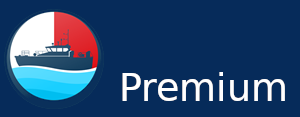Training is key to Pacific marine pilots’ tanker safety success
Consistently 99.9 per cent safe operation of large vessels including oil tankers.Article by Context - Energy examined (Holly Quan) - Apr 29, 2022
Photo taken from YouTube
Marine pilots on Canada’s West Coast have an exceptional safety record in the world’s largest pilot-mandatory zone for large vessels including oil tankers.
Could this happen in Canada? It’s not impossible, but Canada has world-class marine safety built into how we manage shipping that goes a long way to minimizing the chance of a mishap. One of the keys to the safety regime is our use of professional marine pilots.
Canadians care about marine safety. We have the world’s longest coastline and coastal areas of great beauty and ecological sensitivity. With the completion of the Trans Mountain Expansion (TMX) pipeline in 2023, more oil will be transported by ship from Canada’s West Coast to international markets. Some people have raised concerns about the risks of shipping oil through Canadian waters. But Canada’s world-class marine safety organizations are more than up to the task.
Two organizations manage West Coast marine traffic
“Marine experience is important, but so is the business side to effectively manage the pilotage program,” notes PPA president and CEO Kevin Obermeyer. “We focus on administration and providing fully co-ordinated pilotage services within B.C.’s compulsory pilotage zone.”
Every vessel of 350 tonnes or more (except government of Canada vessels, B.C. Ferries and ships captained by Canadian armed forces personnel) must have a pilot onboard when travelling in the coastal compulsory pilotage zone, also called the pilot-mandatory zone.
Pilots are professional mariners who have years of experience and are familiar with coastal waters. Although a ship’s captain is very familiar with their own vessel and crew, they may not be familiar with the specifics of each port where their vessel must go. B.C. pilots have a lifetime of experience in how tides, geography and weather can affect how ships move in and out of B.C.’s harbours. Pilots board a vessel and work with the crew to apply this exceptionally thorough, local expertise to make sure ships, crews, passengers and cargo move, arrive and depart safely in coastal waters.
Most pilotage authorities around the world manage marine traffic within a port or along a river, covering a relatively small area. But the PPA’s mandatory zone is vast, two miles off any given point of land along the West Coast including numerous inlets and narrow passage, and around all islands. It’s the largest such zone in the world.
B.C. coast pilots have developed a safety practice that’s internationally recognized. Effective planning, using the latest navigation equipment, community involvement and training, plus many layers of safety procedures have resulted in a stellar safety record: consistently 99.9 per cent safe operation of large vessels including oil tankers.
“Our record compares favourably with other pilotage authorities worldwide in terms of safety performance,” says Obermeyer. “The difference here is scale, and the extent to which we seek people with extensive knowledge of the coastal environment no matter where they are within the mandatory zone.”
. . .


